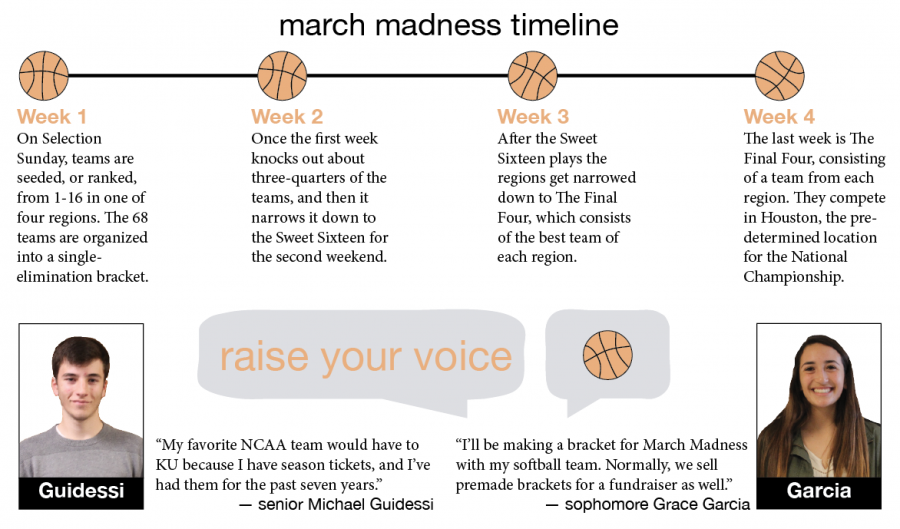Let the Madness Begin
Blue Valley students, faculty compete in March Madness bracket challenges
This year as spring starts, some people get excited for the weather and others get excited for March Madness.
Everyone gathers at games, sport bars and friend’s houses around their TVs with brackets in their hands watching their favorite teams, hoping that their 1 out of 68 teams competing for the championship will win.
March Madness was started in 1939 by the National Collegiate Athletic Association for Men’s Division-I Basketball. This event is known as the biggest annual sporting event in the United States.
There are three phases to the process to determine the 68 teams for the tournament. First, choose the 36 best at-large teams. Then seed the field of 68 teams. Lastly, place the teams into the championship bracket.
When we’ve already seen our favorite teams at their best, everyone starts to make their brackets.
The bracket-making process became popular in 1975 as someone hung up a whiteboard with the brackets on it.
People make their bracket based on the team’s ranking — and, of course, they want their teams to win. Many people even make multiple brackets.
When making a bracket, start with drawing the four regions with eight bracket spots for 16 teams in each region.
Then, the winners from each game are put up against the other winner from another game in the same region until there is one winner in each region.
That team will then go against the winner of an opposite region. This is known as The Final Four. The winners of the two Final Four games will compete against one another for the championship.
Students are getting in on the Madness by making their own brackets and plans with friends to go watch the games.
As March Madness began, Sports and Entertainment Marketing teacher Kathy Peres helped get her students involved by having them make brackets.
“Not only will we be making brackets, but we will be looking into the history of how this little NCAA tournament turned into a huge tournament and how the publicity of a college will become known based on their rankings in the tournament,” Peres said.

Tatum Sanders is a staff writer for the “Tiger Print.” She enjoys writing, working, and spending time with family. Apart of being a writer for the...




